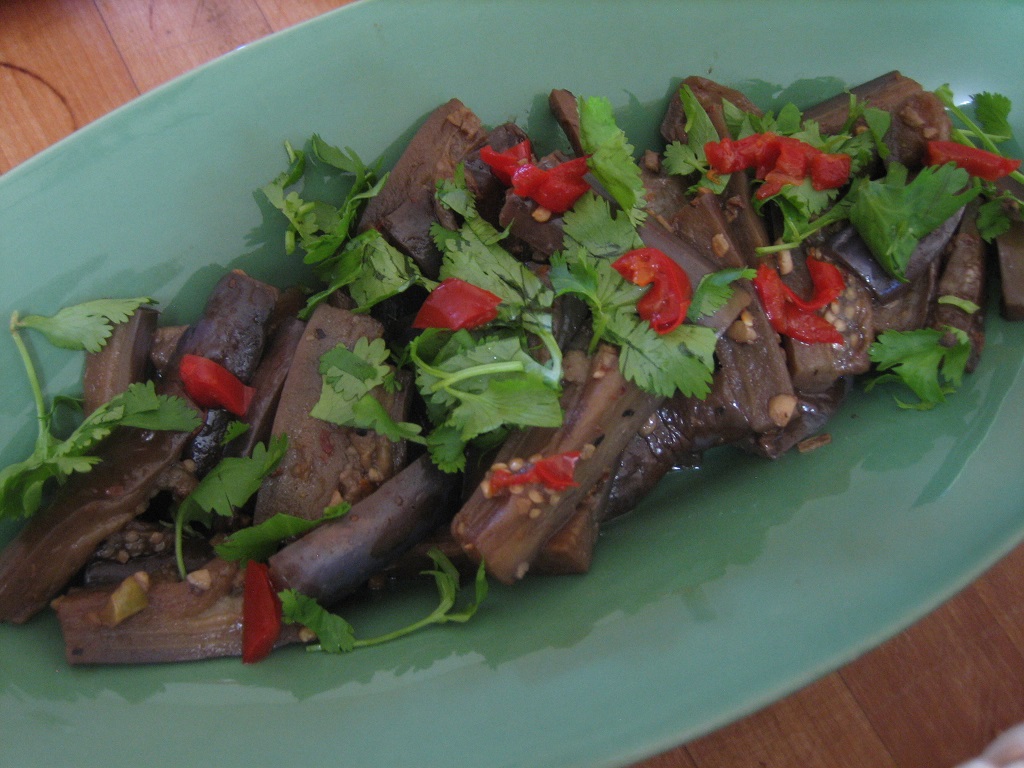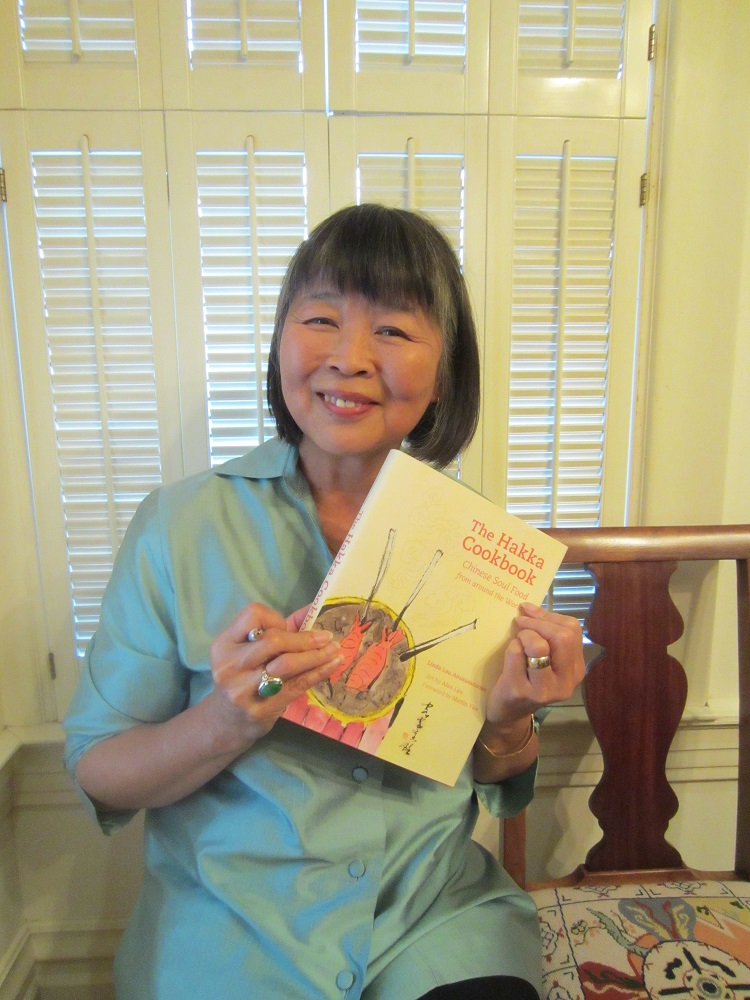The Hakka Cookbook: Linda Finds her Roots
 Monday, June 24, 2013 at 4:00AM
Monday, June 24, 2013 at 4:00AM 
By Sandy Hu
The latest from Inside Special Fork
Growing up, I used to think that Chinese cuisine was one monolithic cuisine – the kind that we got at the local Chinese restaurant. If I had just considered the size of China, both geographically and by population, I would have realized what a myopic view that was. Since then, more restaurants have sprung up and more cookbooks have been written to familiarize us with the regional cuisines of China.
But when my friend Linda Lau Anusasananan first informed me that she was Hakka, and she was writing a Hakka cookbook, I had no frame of reference to digest this bit of news. I knew Linda was Chinese American and she grew up in Paradise, California. So where did Hakka fit in?
That was nine or ten years ago. Well, Linda wrote that book. The Hakka Cookbook, Chinese Soul Food from around the World, was published by University of California Press last year to critical raves. It was named the Best Chinese Cookbook in the World for 2012 at the Gourmand World Cookbook Awards and Linda accepted the prestigious award in Paris. The book has been featured in The New York Times and The Wall Street Journal, and was included in favorite gift cookbooks guides last year by Saveur, Martha Stewart Living and the Associated Press.
In the Beginning
“My grandmother used to tell us, ‘You should be proud to be Hakka,’” Linda recalled when I interviewed her last week. “But as kids, we didn’t care. We just wanted to fit in.” In Paradise, the Lau family and their relatives were the only Chinese in town.
After school, Linda’s grandmother, a teacher in China, conducted Chinese classes for her reluctant grandchildren. And after class, she would cook some of the Hakka dishes of her native land.
Later in life, Linda, who worked for many years on the food editorial staff of Sunset magazine, was looking to explore her own culture and cuisine – she herself was confused about what it meant to be Hakka. “I was looking for a project I could claim as my own. Something I could put my name on,” she reflected. So Linda began researching the Hakka people. “It was much more interesting than I had thought.”
Hakka people were wanderers and nomads who didn’t have a land to call their own, Linda discovered. They started in Northern China in the 4th century and were forced out of the region, gradually moving south. With all the fertile land occupied, they had to be resourceful to survive. Some Hakka people emigrated from China and soon they were dispersed throughout the world – Peru, the Caribbean, India, Singapore, Canada and other countries – and Linda began to wonder, is Hakka food the same or different from place to place?
To find out, wherever Linda traveled, she would seek out Hakka residents to connect with, whether taking a side trip to Malaysia following a wedding in Southeast Asia or mixing a trip to Manchu Picchu with meeting Hakka people in Peru. She would look for contacts – a friend, the friend of a friend, a relative – collecting stories, recipes and photos.
Hakka Cuisine
In the Chinese diaspora, the Hakka adapted more readily than other Chinese groups because they had a long history as immigrants and knew how to survive in new lands, Linda said. “Hakka cuisine, very much like the people, adapted to new homes and new ingredients, expressing local tastes, evolving into new dishes that fit the lifestyles of these immigrants, while maintaining its traditional roots,” she added. “It’s comfort food for the soul. It’s hearty, satisfying and a bit fatty to sustain working people.
“Hakka food has strong, robust flavors. Elements include preserved vegetables, cured meats and soy sauce. It’s simple, plain and uncomplicated. You might call it the country cousin of  Cantonese cuisine. It is characterized by stronger flavor than the more urbane Cantonese food,” Linda explained.
Cantonese cuisine. It is characterized by stronger flavor than the more urbane Cantonese food,” Linda explained.
You don’t have to have a specific interest in Hakka food to enjoy this book. The stories are fascinating and the recipes are appealing. As the former recipe editor at Sunset, Linda is an expert recipe writer. There is a glossary of unfamiliar ingredients, but many dishes can be made from foodstuffs you can get at any large supermarket. And while some of the dishes are more involved, others are simple, like this eggplant dish below that even cooking newbies can master. Whether you stick to the easy recipes or are more ambitious, Linda is with you throughout, giving detailed instructions to ensure the recipes really work for you.
Linda is also a food editor for Special Fork and she contributed another of her recipes from her book in a blog post in January. Steeped Chicken with Fresh Ginger Onion Sauce uses a simple method of cooking that ensures moist chicken breasts every time.
Garlic-Chile Eggplant Sticks
“In Beijing, these spiced eggplant sticks were served as one of many room-temperature starters. They are also delicious served hot as a side dish. With quick braising, the eggplant softens to a creamy texture that absorbs the spicy heat of the chiles and garlic.”—Linda Lau Anusasananan
To get the recipe and shopping list on your smartphone (iPhone, BlackBerry, Android device) or PC, click here.
1 pound Asian eggplant or globe eggplant
2 tablespoons vegetable oil
2 tablespoons minced garlic
1 teaspoon minced fresh ginger
1/2 teaspoon dried hot chile flakes
3/4 cup water, or as needed
2 tablespoons soy sauce
1 teaspoon rice vinegar or black vinegar
1/2 teaspoon sugar
1/4 teaspoon salt, or to taste
2 tablespoons chopped cilantro
- Trim and discard the stem ends of the eggplant. Cut the eggplant into 2- to 3-inch lengths, then vertically into about ¾-inch-thick wedges or sticks.
- Set a 14-inch wok or 12-inch frying pan over high heat. When the pan is hot, after about 1 minute, add the oil and rotate the pan to spread. Add the garlic, ginger, chile flakes, and eggplant. Stir-fry until the eggplant is lightly browned, 1 to 2 minutes, Add the water, soy sauce, vinegar, sugar, and salt. Reduce the heat, cover, and simmer, stirring occasionally, until the eggplant is tender, 6 to 8 minutes. (If all the water evaporates before the eggplant is done, add 2 to 3 tablespoons more water.)
- Transfer the eggplant to a serving dish, and sprinkle with the cilantro. Serve hot or at room temperature.
Note: Slender Asian eggplant works best because each piece is likely to have some skin attached, so the sticks hold together better. You can also use globe-shaped eggplant; the pieces without skin attached may fall apart and the result may have more seeds, but it will still be delicious.
Makes 4 servings as part of a multicourse meal or 6 to 8 servings as an appetizer.
Photography note: In this photo, shot by the author, sliced pickled red chiles have been added for color. This is not part of the recipe and is just an optional garnish.
Recipe by Linda Lau Anusasananan from her cookbook, The Hakka Cookbook, Chinese Soul Food from around the World, published by University of California Press, 2012.
Special Fork is a recipe website for your smartphone and PC that solves the daily dinnertime dilemma: what to cook now! Our bloggers blog Monday through Friday to give you cooking inspiration. Check out our recipe database for quick ideas that take no more than 30 minutes of prep time. Follow us on Facebook , Twitter, Pinterest, and YouTube.
Related posts:

Reader Comments (1)
Hello
can you pelase post some screenshot or 1 or 2 pages in pdf from book, so one can have idea about the book.
Thank you